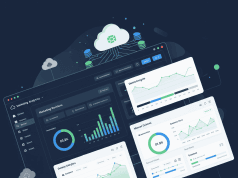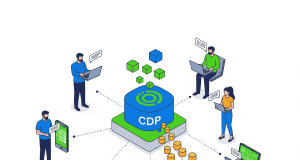As we delve into 2025, the field of customer journey analytics is poised for significant evolution. With businesses increasingly recognizing the importance of understanding customer behavior, the integration of advanced technology and analytical methods is more crucial than ever. Here’s a look at the key trends shaping the future of customer journey analytics this year.
1. Increased Use of AI and Machine Learning
Artificial Intelligence (AI) and machine learning are transforming customer journey analytics by enabling businesses to gather and interpret vast amounts of data efficiently. These technologies help in predicting customer behavior, personalizing experiences, and automating responses to customer needs. In 2025, we can expect even more sophisticated AI models that can process real-time data, identify patterns, and provide insightful forecasts to enhance the customer experience.
2. Omni-channel Integration
As customers interact with brands across various platforms—be it websites, social media, or in-store—creating a seamless omnichannel experience becomes vital. In 2025, businesses will focus on integrating their analytics to ensure that all touchpoints provide consistent insights. This will allow for a holistic view of customer behavior, enhancing strategy and execution across all channels. Companies investing in omni-channel analytics will be better positioned to meet customers where they are and provide tailored experiences.
3. Emphasis on Real-time Analytics
The demand for real-time insights has surged as businesses realize the importance of immediate data in decision-making. In 2025, customer journey analytics will increasingly prioritize real-time data collection and analysis. This capability allows brands to respond quickly to changing customer preferences and behaviors, thereby improving engagement and increasing conversion rates.
4. Enhanced Focus on Privacy and Data Ethics
With growing concerns about data privacy and regulations like GDPR and CCPA, businesses will need to navigate customer journey analytics with an ethical approach. In 2025, companies will invest more in transparent data practices and privacy-compliant analytics. Building trust through ethical data use will be essential in maintaining customer loyalty and safeguarding brands against compliance risks.
5. Integrative Customer Feedback Loops
Feedback is a critical component of understanding the customer journey. In 2025, brands will increasingly incorporate customer feedback into their analytics. This involves not only using traditional surveys but also leveraging social listening tools and sentiment analysis. By combining qualitative feedback with quantitative data, companies can develop deeper insights into customer needs and sentiments.
6. Predictive and Prescriptive Analytics
Moving beyond descriptive analytics, businesses will embrace predictive and prescriptive analytics in 2025. These advanced techniques allow for forecasting future customer behaviors and recommending optimal actions to enhance customer satisfaction and loyalty. By utilizing these analytics, brands can craft proactive strategies rather than reactive ones, positioning themselves to meet future demands more effectively.
7. Integration of Voice and Visual Analytics
With the rise of voice search and visual platforms, understanding how customers interact with these mediums is imperative. In 2025, organizations will integrate voice and visual analytics into their customer journey frameworks. This transition will enable them to capture insights from voice queries, emojis, images, and videos, providing a richer understanding of customer preferences and engagement.
8. Cross-Departmental Collaboration
The trend of breaking down silos within organizations is gaining momentum. In 2025, more companies will prioritize cross-departmental collaboration in customer journey analytics. Analytics teams, marketing, sales, and customer service will work together to ensure insights are shared and acted upon collectively. This collaborative approach fosters a comprehensive understanding of customer journeys and aligns strategies across the organization.
Conclusion
The landscape of customer journey analytics is rapidly evolving, driven by technology, customer expectations, and regulatory landscapes. In 2025, organizations that are agile, data-driven, and customer-centric will have the competitive edge. By embracing these trends, businesses can better understand their customers and create meaningful connections that drive engagement and loyalty. As we move through this dynamic year, staying attuned to these developments will be crucial for anyone in the field of customer experience and analytics.









